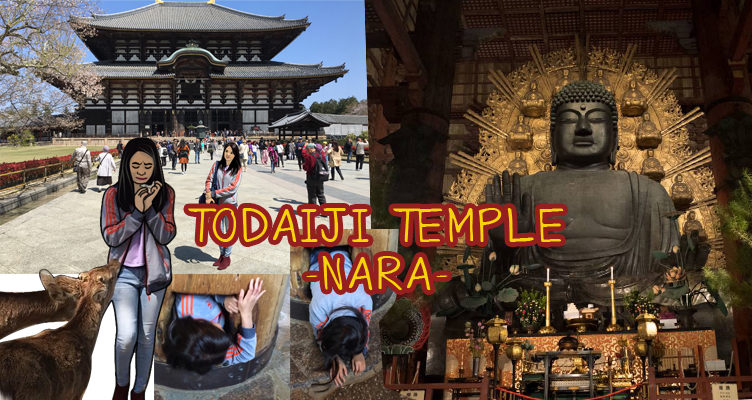Continued from Nara Park – we kept walking past Nara Park to Todaiji Temple, home to the famous15 meter (second largest) Buddha statue in Japan!
(ภาษาไทย)
I would say we followed the deer from Nara Train station to this temple! I think the deer learned from experience to follow the tourists and get more treats. So there are more deer in the temple than in the park! 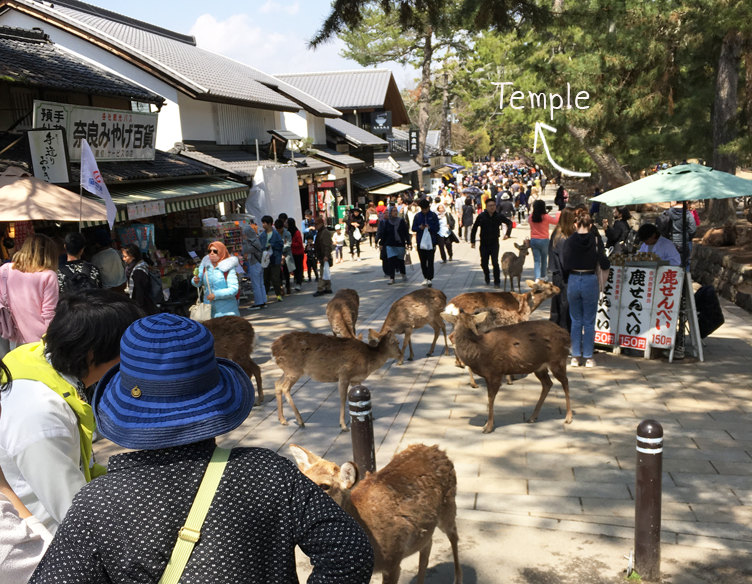
We are here in the high season for Japan (Mar – Apr), the temple is very crowded with both tourists and deer!
It’s about 600yen or $6 for the entrance ticket for the Temple only, but if you want to do both temple & Museum, it’s 1,000Yen or $10.
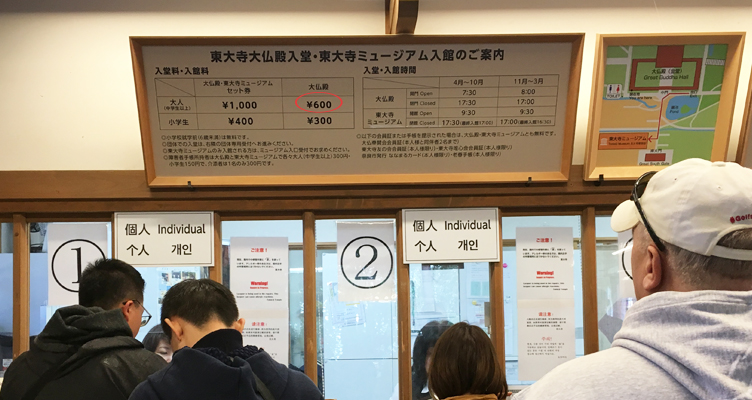
We did a combination ticket for Temple & Musuem but guess what? We couldn’t find the museum! So we actually only did the temple at $10!!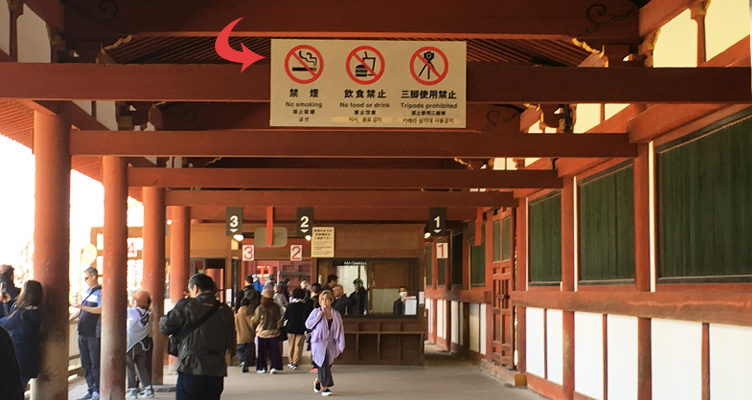
First, the Temple rules are no smoking, no food & drink allowed, tripod camera prohibited and no drones!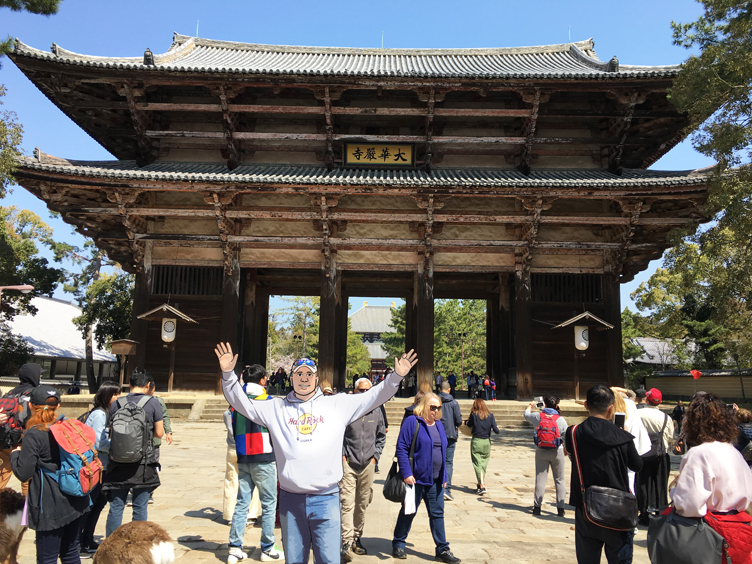
It said that this temple is the largest wooden building in the world and is a UNESCO World Heritage site.
Look for and find the giants at the front gate, they are huge wooden statues!
The temple was established in the early Nara Period (710-1185), and its main hall was completed in 752. Wow, it’s about an 1800 year old temple!!!
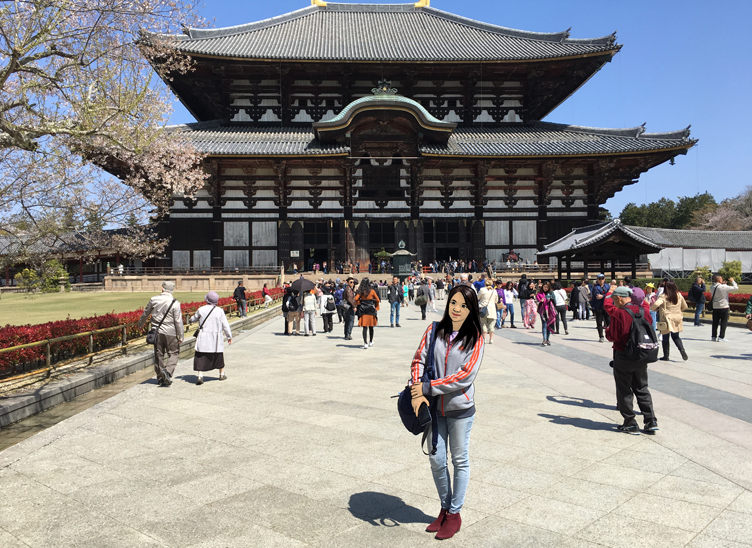
The Daibutsuden (Big Buddha Hall) is the world’s largest wooden building, there is a Buddha image, Japan’s largest bronze statue of Buddha (Daibutsu) here. The 15 meters tall seated Buddha represents Vairocana and is flanked by two Bodhisattvas.
In the hall, you will see many huge wooden columns!
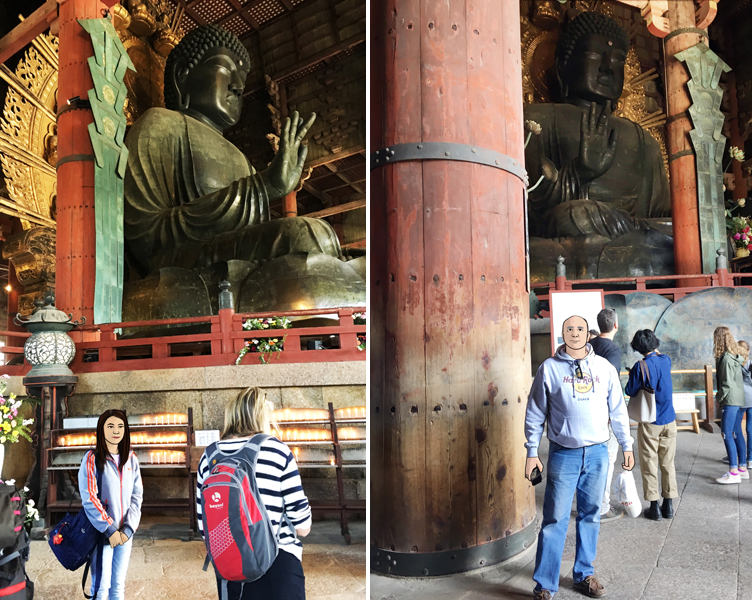
But there is only one wooden column with a small hole carved through the bottom. Enlightenment is reportedly promised to anyone who can squeeze through this hole.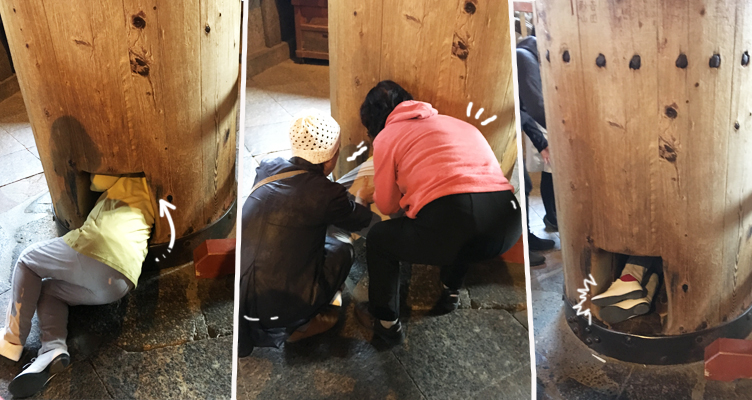
In practice, this means a lot of kids have enlightenment in store (or only skinniest adult!)
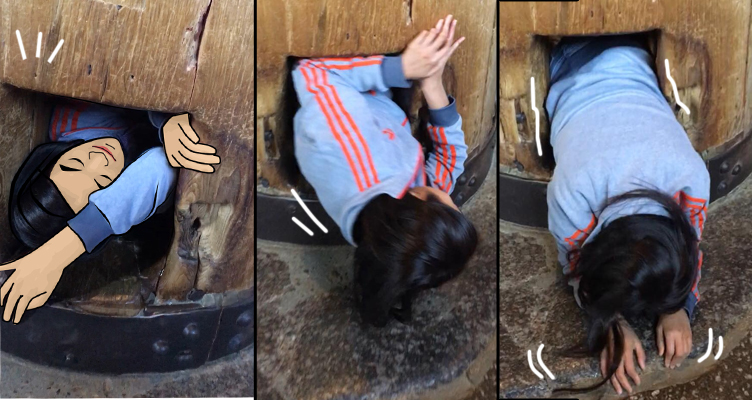
t’s me at 47kg or 110 lbs, I could make it throughout the hole but it’s very tight!
Just before the exit is a souvenir area where you can get the Omamori ” lucky charm”, colorful silk brocade pouches that are often handmade.
Each of Omamori delivers specific good luck– which must be more effective!
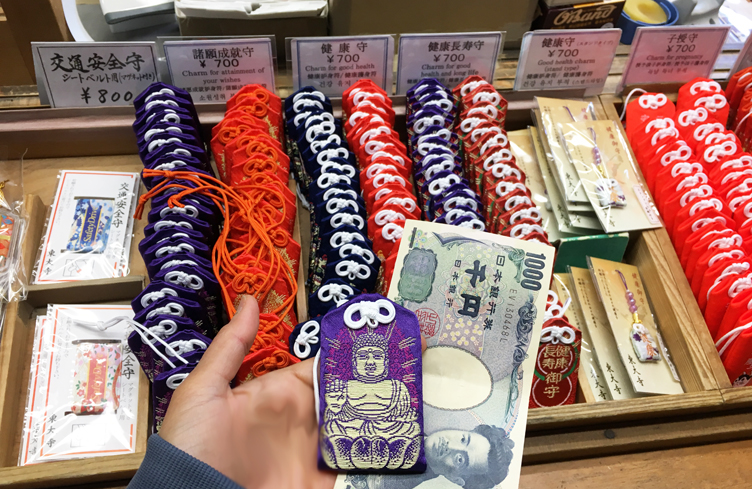
Omamori aren’t regular souvenirs– it’s important to respect their cultural heritage, the Japanese will NOT OPEN THE POUCH, it will destroy your good luck and possibly unleash other unknown consequences. And Omamori has an expiration date— usually a year after buying them, the good luck starts to wear off.
I think it’s a trick to make people go back to visit this temple (?) but I got my bag just in case!!
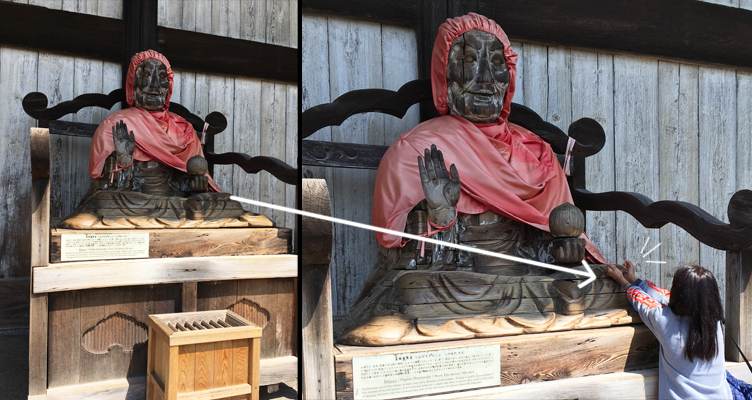
To the right of the entrance (in the exit way from the hall) is a statue of the Yakushi Nyorai. Though a bit scary-looking on first glance, it’s actually a Buddha of medicine and healing.
Touching a part of the Yakushi Nyorai and then the corresponding part of your own body is said to heal any ailments you have there. My wrists have been hurt ever since I got the blood test in the US, I wish the budda will help to heal them for me, blessing 🙂
After I visited the temple, we walked to the left side where we thought we could find the museum. But the more we walked the more shrines there are to see. Just too bad we couldn’t read any of the Japanese signs – we didnt know what they are or where we are!????
So we kept walking around the park and back to the front of Temple where we found this mochi shop, I did had one with the green tea favor and Tim had one with custard favor. They served with fresh strawberry, and it’s good sweet!
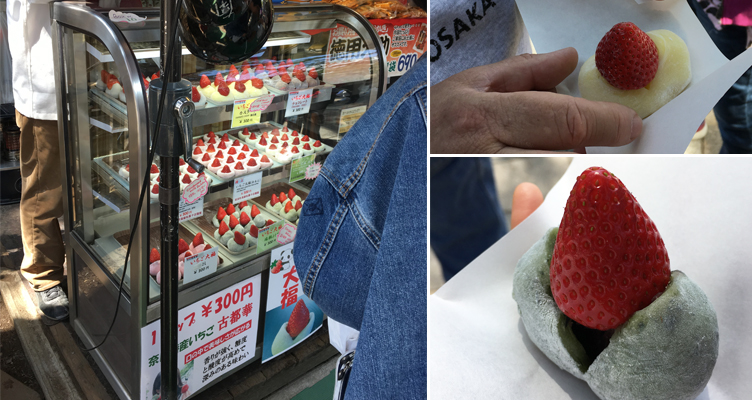
You can find these similar shops in Osaka (we found one on Shopping Street, you can read more about it in my Osaka & Shopping street blog).
Well, this temple is the MUST SEE if you are in the Kansai region of Japan!

